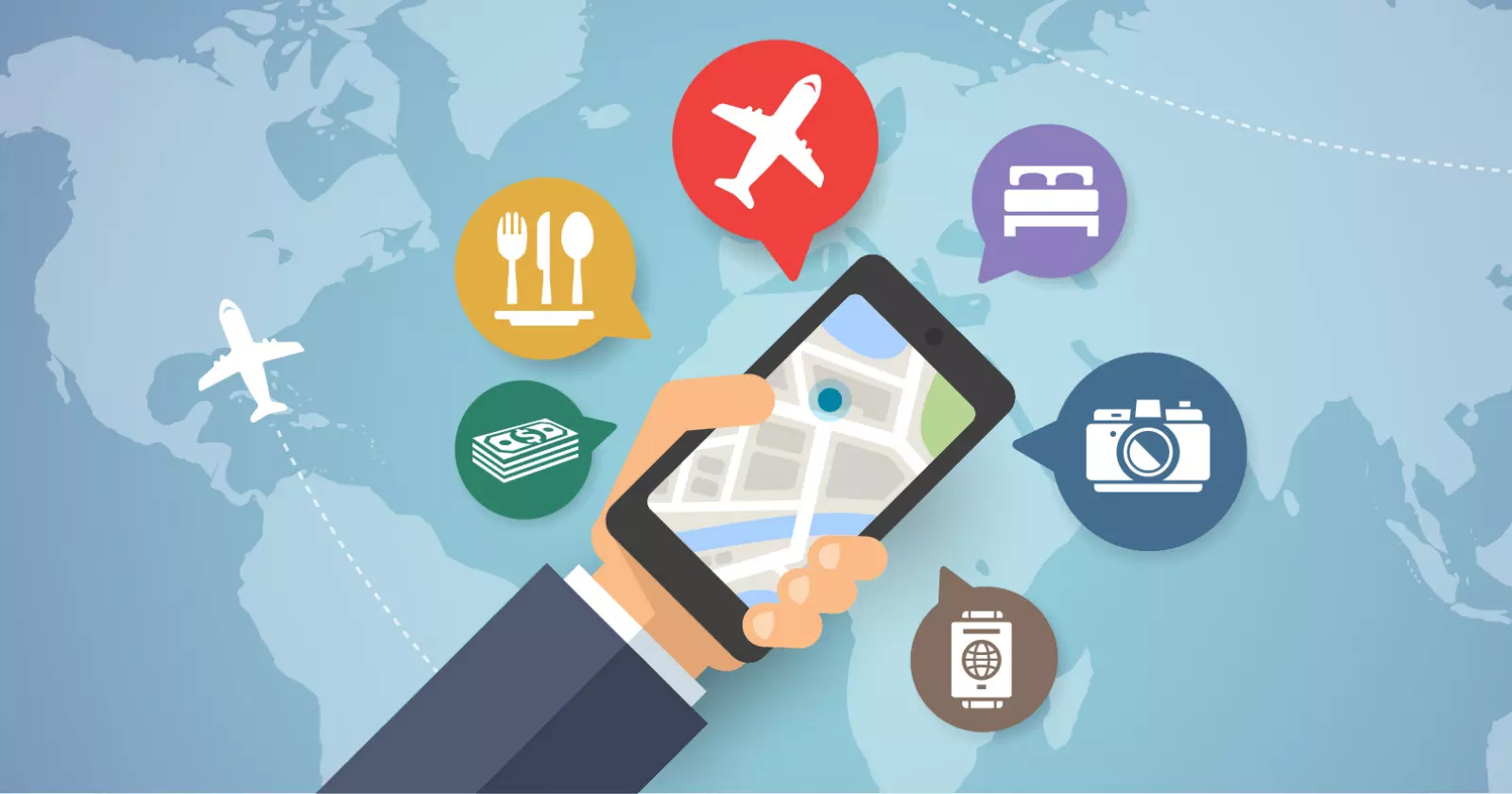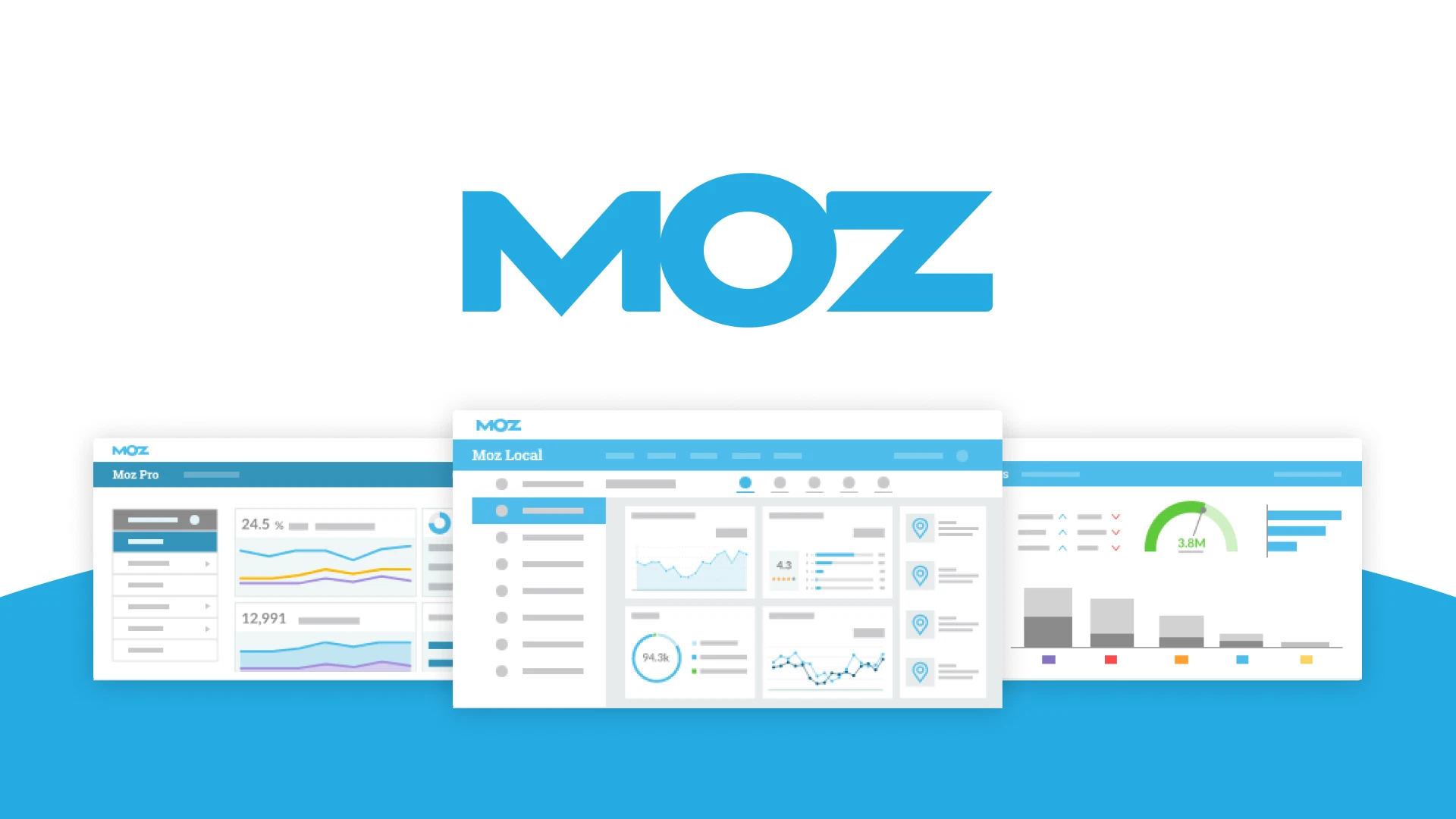In the competitive world of SEO Google Maps tourism & travel agencies, visibility is everything. Whether you run a travel agency offering bespoke vacations, operate a local tour company, or manage guided expeditions, your success heavily depends on how easily potential customers can find you. In today’s digital-first world, Google Maps SEO is one of the most potent tools for local visibility, particularly for tourism and travel agencies that rely on geographic relevance and customer proximity.
Google Maps isn’t just a navigation tool, but an expansive local search engine. When travelers search, Google Maps listings dominate the top of the results page. This is where the local pack appears, a prime set of business listings that drive significant traffic, calls, and bookings. Appearing in that local pack and having a well-optimized Google Business Profile can significantly increase the visibility and credibility of a tourism or travel brand.
Table of Contents
ToggleUnderstanding Gogle Maps SEO
SEO Google Maps tourism & travel agencies focuses on optimizing a business’s presence within the ecosystem of Maps and its local pack. It involves managing your Google Business Profile, gaining reviews, increasing engagement, improving local keyword targeting, and enhancing your data consistency across the web, including your name, address and phone number.
Google’s local algorithm differs slightly from its general algorithm. While traditional SEO focuses on content relevance and domain authority, local SEO considers proximity, relevance, and prominence. For tourism and travel agencies, optimizing for Google Maps can mean the difference between being the go-to agency in a high-traffic tourist zone and being invisible to new visitors.
For example, when someone in Rome searches, Google’s algorithm filters results based on business relevance to the query, physical proximity to the searcher or the area searched, and the prominence of the business through ratings, citations, and links. Agencies that optimize their Google Maps listing will more likely appear at the top, attracting clicks, inquiries, and ultimately, bookings.
The Power of Local Intent in Travel
Unlike in other industries, SEO Google Maps tourism & travel agencies is inherently local. Even if customers are researching trips abroad, they typically start their journey by consulting local travel agents, tour operators, or tourism companies in their area, or the one they plan to visit. For instance, if a traveler is planning a safari, and your agency operates in it and has a strong Maps presence, you stand a good chance of capturing that lead.
Moreover, tourists often make decisions on the fly while already traveling. Mobile search behavior shows a strong trend toward proximity queries. If your agency or service is optimized for Google Maps SEO, it becomes more visible to tourists who are already present in the area and are actively looking to book services. That kind of visibility drives foot traffic, phone calls, and direct conversions, often with higher intent than organic web searches.
Optimizing Your Google Business Profile
The first step in SEO Google Maps tourism & travel agencies is claiming and optimizing your Business Profile. This free listing allows your agency to appear in Google Search and Maps, making it essential for visibility. For a travel agency, this listing acts as a digital storefront. You can add photos, list services, showcase reviews, post updates, and answer FAQs.
A complete and accurate profile includes your business name, physical address, phone number, website, business hours, and category. The primary category should reflect your core service, and you can add secondary categories to broaden your reach.
Photos are extremely important in the tourism sector. Potential customers want to see the quality of your tours, accommodations, vehicles, and the experience you provide. Upload high-quality images regularly, and use images that reflect what tourists can expect, including smiling clients, beautiful destinations, and real moments from your tours.
Business descriptions also play a role in search engine optimization. Write a clear and keyword-rich description of your services, including your specialties.
Reviews For Trust and Visibility
Customer reviews are central to SEO Google Maps tourism & travel agencies. They build social proof, establish trust, and signal authority to Google. A travel agency with 100 positive reviews will almost always rank higher and attract more clicks than one with five or ten.
SEO Specialist advices to encourage every client into leaving a review after their experience. Train your staff to ask for feedback at the right moment, usually after a successful trip or a good service interaction. Use follow-up emails to politely request a review, and provide a direct link to your Google Business Profile to make it easy for customers.
However, quantity isn’t everything. Quality and response rate matter too. Respond to every review, whether positive or negative. Thank customers for positive feedback and address issues raised in negative reviews professionally. Your responses show prospective clients how you handle customer service, which can influence their decision to book with you.
Recent reviews are also more impactful. Make review generation a continuous process to keep your profile fresh and appealing.
Leveraging Local Keywords for Google Maps
While traditional SEO Google Maps tourism & travel agencies emphasizes keywords on your website, local SEO for Google Maps also benefits from strategic use of keywords within your Business Profile, review responses, and posts.
Include relevant local and industry-specific keywords. Use these naturally in your business description and service listings. Also, when responding to reviews, subtly reinforce relevant keywords.
Additionally, make regular use of Google Posts, a feature that allows you to share updates, offers, and events directly on your Business Profile. These posts are indexable by Google and can help reinforce topical authority and increase engagement.
Data Consistency and Citations
Google uses citations, which are mentions of your business name, address, and phone number on other websites, to verify your legitimacy. Having consistent data information across your website, social media platforms, business directories, such as TripAdvisor, Yelp, Booking.com, and tourism sites boosts your SEO Google Maps tourism & travel agencies.
Any discrepancies can confuse Google and hurt your chances of ranking well. Use tools like Moz Local to audit and correct your citations. Getting listed on reputable tourism directories and blogs also helps with backlinks, which further improve your domain and local authority.
Embedding Maps and Enhancing On-Site SEO
On your website, include an embedded Google Map pointing to your office or tour start location. This not only improves the SEO Google Maps tourism & travel agencies, but also reinforces local relevance. Add schema markup to help search engines understand your location-based information.
Ensure that your site includes pages optimized for local keywords. Each location or service type should have its own optimized landing page, with relevant content, images, and meta data.
Mobile Optimization and Click-to-Call Features
In the context of SEO Google Maps tourism & travel agencies, a majority of local searches, especially for tourism-related queries, occur on mobile devices. Your site must be mobile-friendly, load quickly, and include clear calls to action.
Include click-to-call buttons on your mobile site and within your Google Business Profile. Travelers often make spontaneous decisions while walking or driving around a city. Making it easy for them to call your agency can be the difference between getting a new client or losing out to a competitor.
Using Google Q&A and Messaging Features
Google Maps listings also include a Q&A section where potential customers can ask questions. Monitor this section and answer questions promptly and thoroughly. You can even ask and answer your own FAQs to preempt common inquiries.
Messaging is another powerful feature of SEO Google Maps tourism & travel agencies, allowing customers to message you directly from your Business Profile. Enable it if you have the resources to monitor and respond quickly, as response time affects customer trust and engagement.
Tourism-Specific Considerations
Tourism and travel businesses often operate in multiple locations or serve multiple languages. In such cases, Google Business Profiles should reflect the different office locations or service zones. Remember, in your SEO Google Maps tourism & travel agencies, that each physical office or pickup point should have its own listing, optimized with localized information.
If you cater to international tourists, offering multilingual content on your Business Profile and website is a significant advantage. Google considers this helpful content and may rank you higher for searches in different languages, particularly if the search is conducted abroad.
Consider seasonal adjustments, too. Travel and tourism are seasonal by nature, so keep your listings up to date with seasonal offers, tour availability, and business hours. If you close during off-peak months, reflect that in your hours to avoid disappointing potential customers.
Tracking and Analyzing Performance
Use tools like Google Business Profile Insights to track your SEO Google Maps tourism & travel agencies, including how many people see your listing, where they come from, how they interact with your profile, and what actions they take, such as calls, clicks, or direction requests.
Integrate Google Analytics with UTM parameters to track traffic from your Business Profile to your website. This data can show you how well your Google Maps SEO efforts are translating into real leads and conversions.
Watch trends in user behavior, such as what keywords are driving discovery, what services are being searched, and when your customers are most active. These insights allow you to adjust your content, ads, and service offerings to match demand.
Turning Local Visibility into Real Bookings
SEO Google Maps tourism & travel agencies is not optional but critical. With the right strategy, it can transform how travelers discover and engage with your business. It enhances credibility, drives local traffic, and connects you directly with customers at key decision-making moments.
From claiming and optimizing your Business Profile to managing reviews, using local keywords, and analyzing performance, each element contributes to a robust presence on Google Maps. In an industry where timing, trust, and visibility can determine your revenue, investing in Google Maps SEO delivers a strong competitive edge.
Whether you’re a small agency offering niche travel experiences or a large-scale tour operator managing multiple destinations, mastering local SEO for Google Maps can elevate your brand and fill your calendar with bookings, not just from locals, but tourists around the globe.
Expanding Your Reach Through Smart Content
In SEO Google Maps tourism & travel agencies, content marketing plays a supporting but critical role. For travel agencies and tourism operators, content needs to bridge the gap between inspiration and decision-making. Writing blog posts, travel guides, and location-specific landing pages helps attract organic traffic, which indirectly strengthens your Google Maps visibility through increased engagement, authority, and brand awareness.
For example, if you run a travel agency, writing a blog post can help you rank for long-tail local searches. Linking this post back to your service pages, including your Google Business Profile link, builds a connected ecosystem that improves relevance and authority in the eyes of Google.
In addition to blogs, consider building destination pages for each location you serve. These pages should include practical travel information, highlight your services, and embed your Google Maps listing. By doing so, you create multiple entry points for travelers looking for local expertise.
Partnerships are also a powerful tool in the tourism space. Collaborate with hotels, local guides, restaurants, and even city tourism boards to exchange backlinks and citations. When other trusted local businesses mention and link to your agency, it boosts your perceived prominence in the local ecosystem.
TripAdvisor, Booking.com, Viator, Expedia, and GetYourGuide are also important to monitor. Though they are technically competitors in some ways, being listed, and highly rated, on these platforms increases your visibility and your chance of being referenced by other websites, further improving your SEO profile. When those listings include your correct details and website link, they serve as valuable citations that support your Google Maps SEO strategy.
The Role of Voice Search in Travel Discovery
Another emerging factor in SEO Google Maps tourism & travel agencies is the influence of voice search. With the rise of mobile assistants and smart devices, more users are searching by voice, especially while traveling. Voice search tends to rely heavily on local results and often defaults to Google Maps listings.
Optimizing your Google Business Profile with conversational, long-tail keywords can help capture voice search traffic. Also, FAQs on your website and business listing are indexed and often used as responses for voice search queries. Craft these questions and answers to reflect the way people naturally speak, which is typically more specific than text-based searches.
Managing Multiple Locations or Service Areas
Many travel agencies operate from multiple offices or serve various cities or countries. In these cases, SEO Google Maps tourism & travel agencies requires a careful strategy to avoid diluting authority while maximizing visibility.
Each physical office should have its own Google Business Profile with unique photos, localized descriptions, and staff contacts if applicable. If you operate in different cities but don’t have physical offices there, you can still optimize your website with location-specific landing pages. However, you must not attempt to claim Google Business listings for areas where you do not have a verifiable address. That could lead to suspension.
In a service-area business model, which is common for private tour guides or concierge agencies, you can define the areas you serve instead of displaying a storefront address. This is ideal for businesses that visit clients at hotels, airports, or public landmarks rather than welcoming them to a physical office.
Google Maps Ads and Pay-to-Play Strategies
While organic optimization remains the cornerstone of SEO Google Maps tourism & travel agencies, there’s a growing trend toward paid visibility via Local Search Ads. These appear in the local pack and on Maps with a small label. They allow you to target travelers searching within a geographic radius and can be especially powerful during peak tourism seasons.
Google Ads allows travel agencies to set up local campaigns, which automate placement across Search, Maps, YouTube, and Display, optimizing for foot traffic and phone calls. These campaigns are ideal for boosting visibility quickly, particularly for newer agencies trying to compete with established players.
The key to success with Google Maps ads is alignment. Your ad copy, targeting, and landing pages must all reflect the same geographic and service relevance as your Google Business Profile. Otherwise, even paid placements can underperform.
Reputation Management as a Ranking Factor
SEO Google Maps tourism & travel agencies is not just a branding matter, but a direct ranking factor for Google Maps. Poor reviews, unanswered complaints, and low engagement metrics will push you down in the local pack. Conversely, a steady stream of 4 and 5 stars reviews, proactive responses, and customer satisfaction signals can push you higher.
Implement a proactive reputation management strategy. Use relevant tools to request reviews and monitor feedback. Don’t fear negative reviews. Instead, address them gracefully. A thoughtful response to a bad experience often impresses future customers more than a generic answer on a good review.
You can also solicit reviews in multiple languages if you serve international travelers. This not only helps Google associate your agency with a broader audience, but it also shows inclusivity and professionalism to potential clients browsing from abroad.
Tour Booking Integrations and Local APIs
Some travel and tourism websites offer booking integrations and local APIs that sync your services with Google Maps. For instance, integrating a booking button from platforms allows customers to book directly from your Maps listing.
This functionality increases conversion rates and also sends positive engagement signals inside your SEO Google Maps tourism & travel agencies. The more actions users take from your profile, like clicking directions, calling, or booking, the more Google trusts that your listing is useful, which in turn can improve your rankings.
Ensure your website and Maps listing are both connected to your booking system so data flows smoothly. That efficiency enhances both the user experience and your SEO footprint.
Social Media and Influencer Outreach
While not a direct factor in SEO Google Maps tourism & travel agencies, social media activity, especially location-tagged content, can influence your visibility indirectly. Encourage travelers to tag your agency on Instagram, TikTok, and Facebook, especially when they share location data. This user-generated content often shows up in local search results and Google Images.
You can also collaborate with local influencers or travel vloggers who create geo-tagged content about your services. This kind of exposure boosts brand awareness and leads to natural backlinks and citations, reinforcing your Maps SEO efforts.
Anticipating the Future of Local Travel Search
As local algorithms of SEO Google Maps tourism & travel agencies are continually refined, it’s becoming increasingly holistic. Google considers not just proximity or keyword matches but user intent, brand sentiment, and behavioral signals. For travel agencies, the challenge is to build an authentic, consistent, and location-relevant digital presence that delights users and meets Google’s expectations.
With the increasing reliance on mobile search, AI recommendations, and hyper-personalized results, your Maps listing needs to be more than just accurate, but engaging, trustworthy, and action-ready. This means blending SEO best practices with outstanding customer service, digital responsiveness, and compelling local content.
At A Glance
What is SEO Google Maps tourism & travel agencies?
It’s the process of optimizing your Google Business Profile and online presence so your travel or tourism business ranks higher in local search results and the Google Maps local pack, attracting more visitors, calls, and bookings.Why is Google Maps SEO important in the travel industry?
Tourists often search on the go for local agencies, tours, and experiences. A strong Maps presence boosts visibility at key decision-making moments, driving high-intent leads and increasing credibility through reviews and accurate information.How can travel agencies improve Google Maps rankings?
Key steps include optimizing your Google Business Profile, gathering and responding to reviews, using local keywords, ensuring consistent data, adding high-quality photos, leveraging Google Posts, and building citations on reputable tourism directories.








